Provago

COMPOSITION :
- Each 1 ml contains
- Buserelin acetate : 0.0042 mg
- (equivalent to 0.004 mg buserelin)
Hypothalamic-Pituitary In the control of Female reproductive function
Oestrous cycle is regulated by the hypothalamic-pituitary-gonadal axis, which produces hormones. The reproductive axis is composed of the hypothalamus, pituitary, and the ovary. The hypothalamus is a specialized portion of the ventral brain, its primary function is to release gonadotropin hormones (GnRH).
GnRH stimulates the anterior pituitary gland to produce and release FSH (follicular-stimulating hormone) & LH (luteinizing hormone). FSH and LH are transported through systemic blood circulation to the ovaries, where they initiate a series of morphological changes that lead to ovulation and pregnancy if fertilization occurs.The primary hormones produced by the ovary are estrogen and progesterone. These hormones are transported by the blood stream to "target" tissues to cause a reaction. Estrogen is produced by the follicle, which is located on the surface of ovary. As the follicle grows, more estrogen is produced. As increasing amounts of estrogen are released into the blood stream and travel to the anterior pituitary, it acts in a positive feedback fashion, stimulating pulsatile LH release.

It also affects the nervous system of the cow, causing restlessness and most importantly, the willingness to be mounted by other animals. Estrogen causes the uterus to contract, allowing sperm to be transported through the female reproductive tract more efficiently after insemination. Other effects of high estrogen concentrations in the blood include increased blood flow to the genital organs and the production of mucus by glands in the cervix and vagina. These characteristics are all signs of estrus, or sexual receptivity. Progesterone produced by the CL prevents cyclicity by acting on the anterior pituitary in a negative feedback fashion; therefore, decreasing the release of FSH and LH. It prepares the uterus for reception of fertilized ova and subsequent pregnancy. It also helps the cow maintain pregnancy by suppressing uterine contractions and promoting development of the uterine lining.Last important hormone is prostaglandin F.2a(PGF2a) which is secreted by the endometrium of the uterus, it affects structures on the ovary, helping to initiate ovulation by causing the demise of the CL, which results in withdrawal of progesterone's negative feedback mechanism.
Direction of Usage
Cows & Buffloes: (Intramuscular Route)

| Clinical signs | Conditions | Dosage | Time of administration |
|---|---|---|---|
| No Heat | Anoestrus | 2.5 ml | On reporting.Inseminate on heat |
| Synchronization of oestrus | 2.5 ml | On start of scheduled plan | |
| Repeating at regular interval | An ovulatory heat | 5 ml | At heat, Inseminate in next heat |
| Prolonged heat | Follicular cyst | 5 ml | At heat |
| No Heat (PCL) | Luteal cyst | 5 ml | On Reporting |
| Repeating with advancing days | Delayed Ovulation3 | 2.5 ml | At time of Insemination |
Direction of Usage
Mares: (Intramuscular Route)

| Conditions | Dosage |
|---|---|
| Cystic changes of the ovaries with or without prolonged permanent oestres |
10 ml. |
| To induce ovulation of mature follcle and there by to synchronize ovulation more closely with mating in mares |
10 ml. |
Direction of Usage
Camel (Cow Camel): (Intramuscular Route)

| Conditions | Dosage |
|---|---|
| Induction of Ovulation in Oestrus She Camel |
After 24 Hours of insemination / mating : 10 ml |
Direction of Usage
Sheep & Goat: (Intramuscular Route)

| Conditions | Dosage |
|---|---|
| Anoesturs & Silent Heat | 1 ml |
Direction of Usage
Swine: (Intramuscular Route)

| Conditions | Dosage |
|---|---|
| Anoesturs | 2.5 ml |
Direction of Usage
Rabbit: (Intramuscular Route)

| Conditions | Dosage |
|---|---|
| Improvement of conception rate and ovulation induction at post-partum insemination |
0.2 ml |
Important Note - Dosage administration:
In cattle, sheep, goat, horses, camel & rabbit the preferred route of administration is intramuscular injection (I.M.), but it may also be injected intravenously (I.V.) or subcutaneously (S.C.).In pigs, the preferred route of administration is intramuscularly (I.M.), but it may also be injected intravenously (I.V.).
Withdrawal Period : Milk & Meat: 0 day
Presentation : 2.5 ml, 5 ml & 10 ml.
